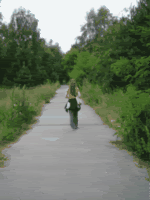


Picture 1: Part of electric signal fence
Picture 2: Wall remainder at house in Prenzlauer Berg
Picture 3: Old connection box
In fact, over the day we have become experts in identifying old Eastern German wall related security devices ranging from special street lamps to fences: sounds very geeky – was very geeky – but really interesting as well, because these features hidden in the existing infrastructure are often the only remainders of the wall. If you do not know about them, the wall is completely gone. With retrofitting activities progressing fast in the Eastern part of the city more and more of these features are vanishing and will be gone in the not-so-far future.
 What is still most visible in many parts of Berlin is the structure of the wall. For those who have not been to Berlin so far: the wall was a conglomerate of security zones and barriers ranging in size between several tens of metres to over two kilometres. When the wall was pulled down, what remained in these areas was usually the path, the security guards used for patrolling (Kolonnenweg), as well as a lot of open space. Due to ownership issues, the length of planning processes etc. these areas have remained largely untouched for many years, developed a spontaneous vegetation and given Berlin centre a feeling of greenness and openness. However, these open spaces are vanishing now rapidly being replaced by new built areas. So even as a newcomer to Berlin, the major impression of this first day of hiking was that the city is changing rapidly and the history of the divided Berlin becomes less and less visible in the general cityscape. If you want to see it – don’t wait too long!
What is still most visible in many parts of Berlin is the structure of the wall. For those who have not been to Berlin so far: the wall was a conglomerate of security zones and barriers ranging in size between several tens of metres to over two kilometres. When the wall was pulled down, what remained in these areas was usually the path, the security guards used for patrolling (Kolonnenweg), as well as a lot of open space. Due to ownership issues, the length of planning processes etc. these areas have remained largely untouched for many years, developed a spontaneous vegetation and given Berlin centre a feeling of greenness and openness. However, these open spaces are vanishing now rapidly being replaced by new built areas. So even as a newcomer to Berlin, the major impression of this first day of hiking was that the city is changing rapidly and the history of the divided Berlin becomes less and less visible in the general cityscape. If you want to see it – don’t wait too long!The first day out was also a reminder that Berlin is paved with very special stories. Today we learned about Osman Kalin. He is a Turkish immigrant who has been living in the western part of Berlin Kreuzberg since 1963. Technically this statement is not correct. In Kreuzberg there was a small piece of land where the wall was not standing right at the political border between East and West, but slightly removed leaving a small triangle of Easter
 n soil “unprotected” and accessible to West Berlin citizens. For a long time this piece of land was used as a dump and served some homeless people as a meeting point in the evening. Until Osman Kalin came in 1982. He cleaned the whole place, built a house on Eastern soils and started growing vegetables. He lived there on Eastern territory tolerated by the GDR government and maintained good relationships with the security guards by sharing his harvest.
n soil “unprotected” and accessible to West Berlin citizens. For a long time this piece of land was used as a dump and served some homeless people as a meeting point in the evening. Until Osman Kalin came in 1982. He cleaned the whole place, built a house on Eastern soils and started growing vegetables. He lived there on Eastern territory tolerated by the GDR government and maintained good relationships with the security guards by sharing his harvest.Life has not become easier for Kalin since the fall of the wall. He has managed to stay on his grounds even though there have been attempts to drive him out of the place. For now the district of Kreuzberg has granted him a right of residence and the "Gecekondu" will continue to contribute its little story to Berlin.

Keine Kommentare:
Kommentar veröffentlichen